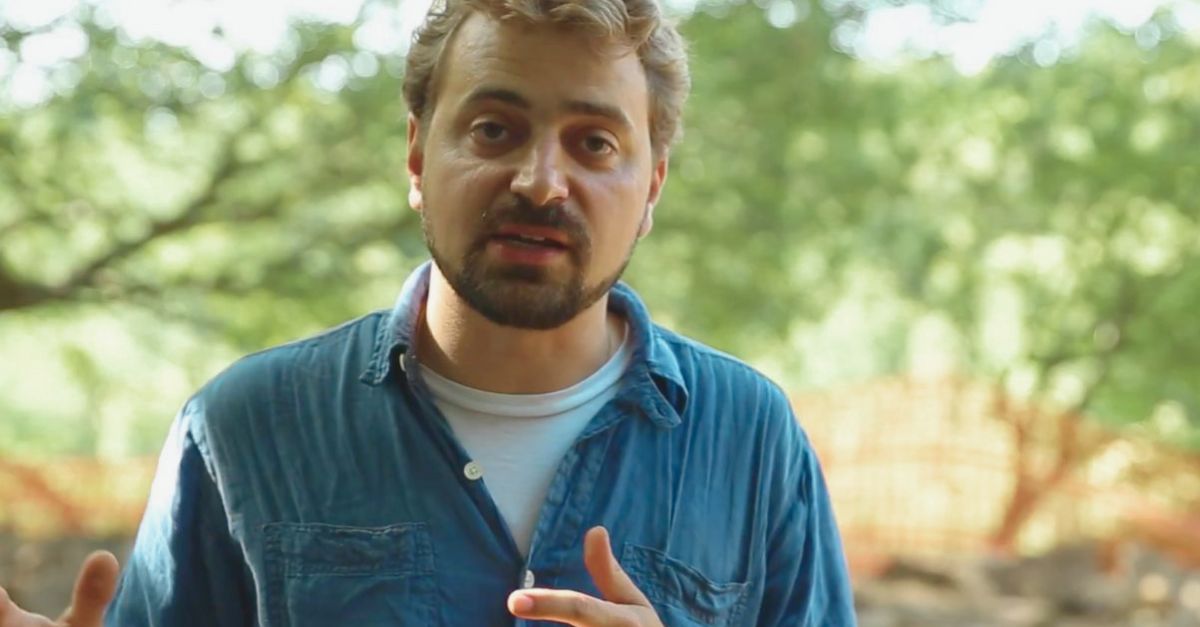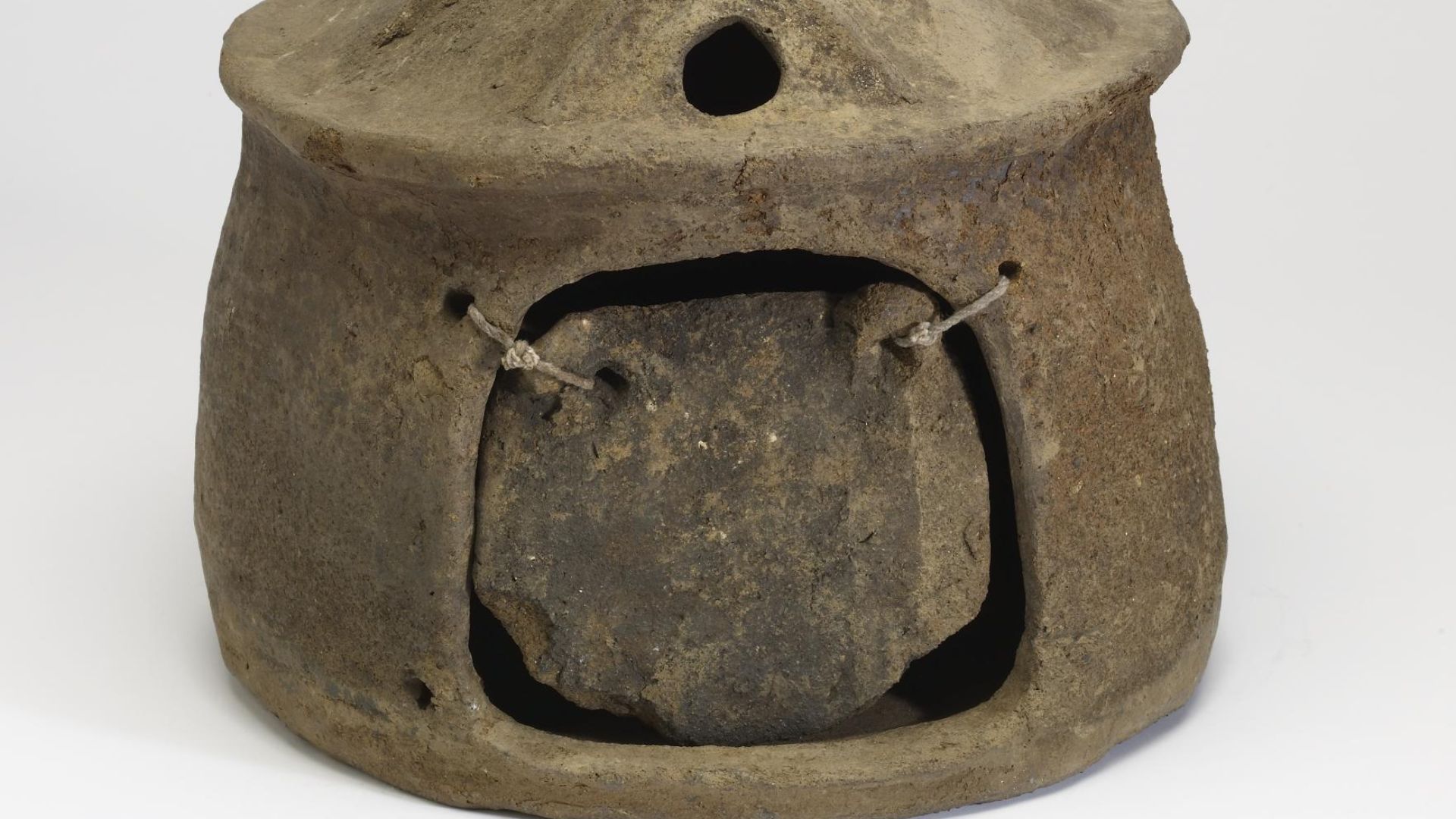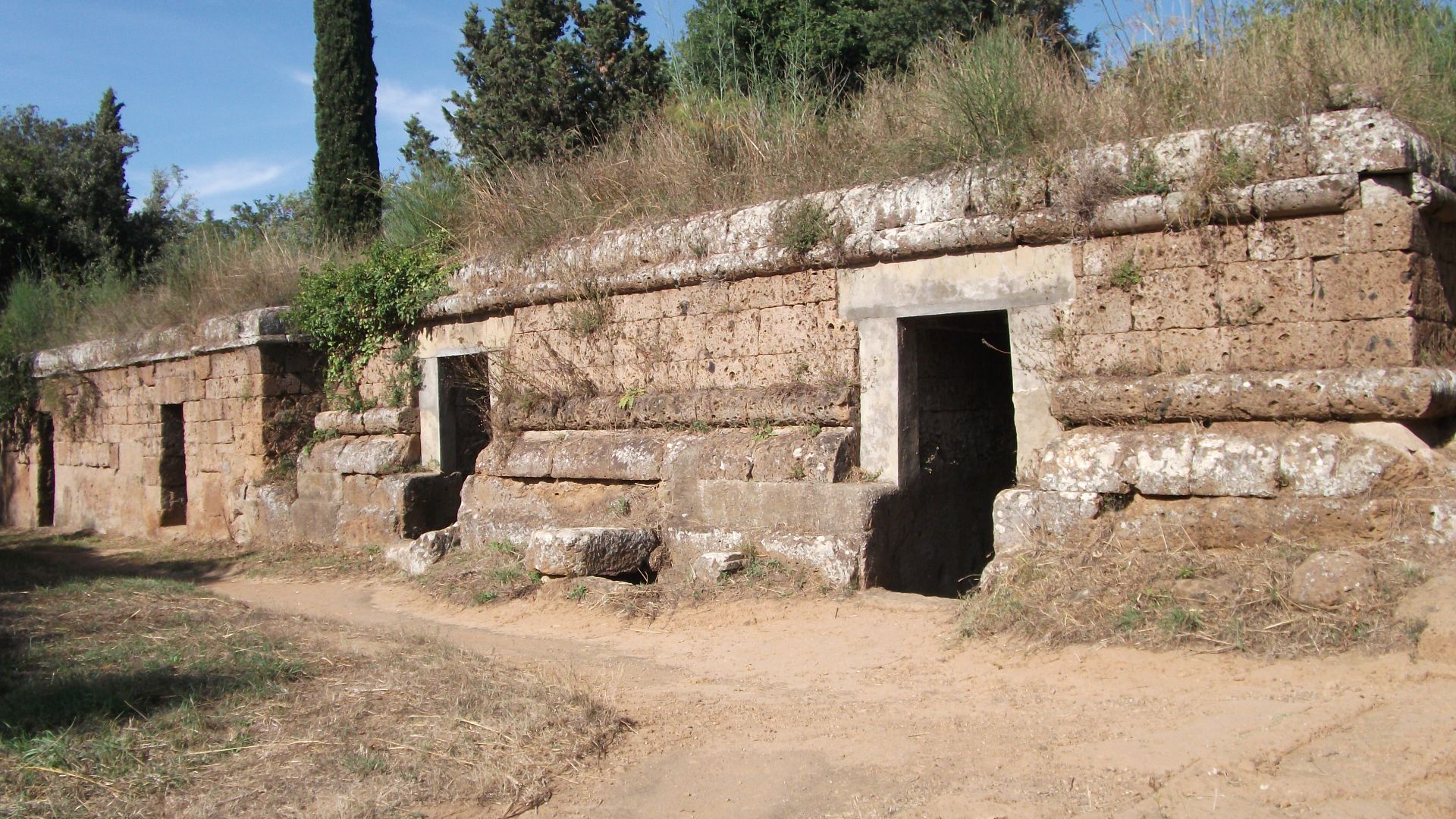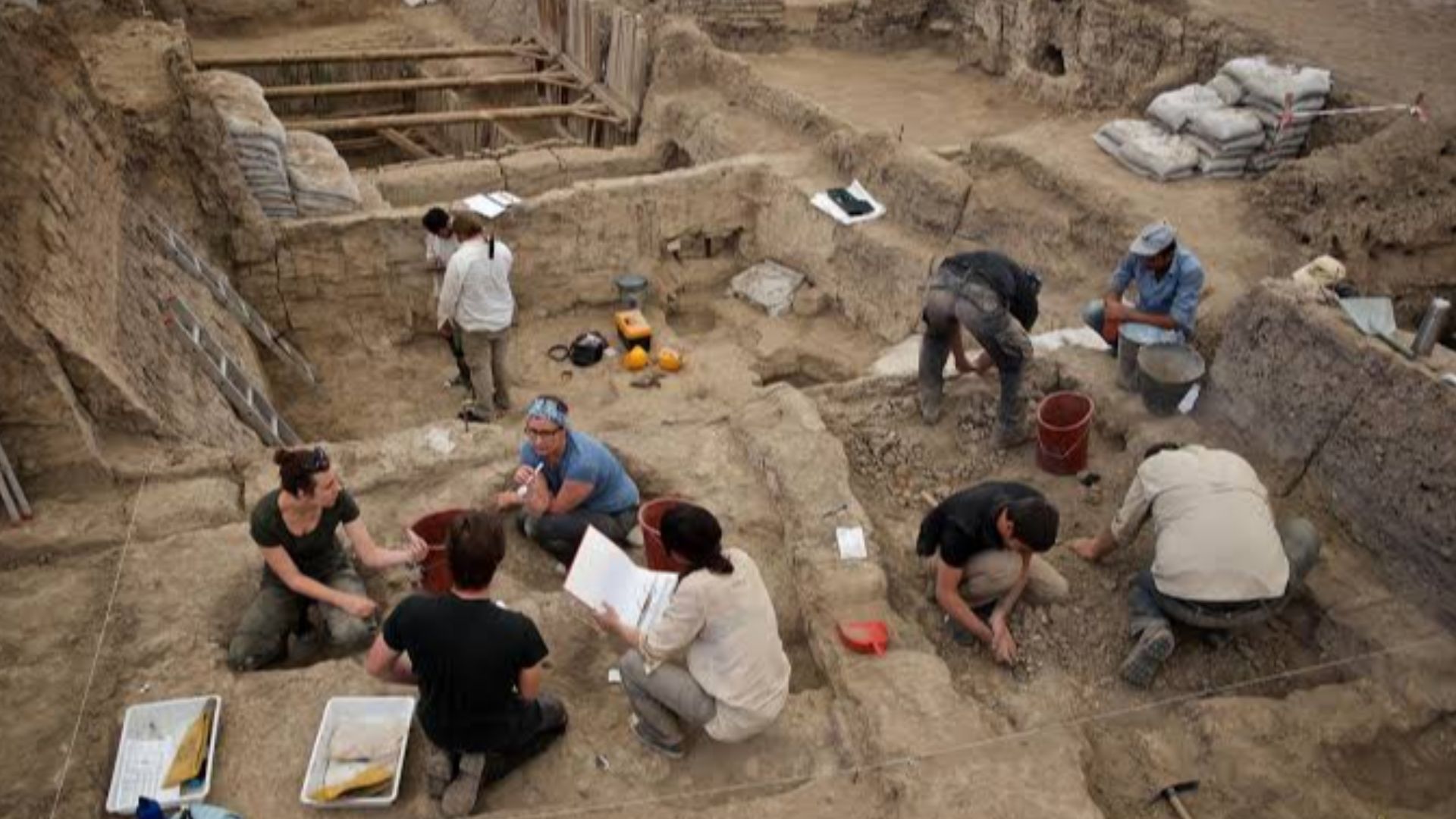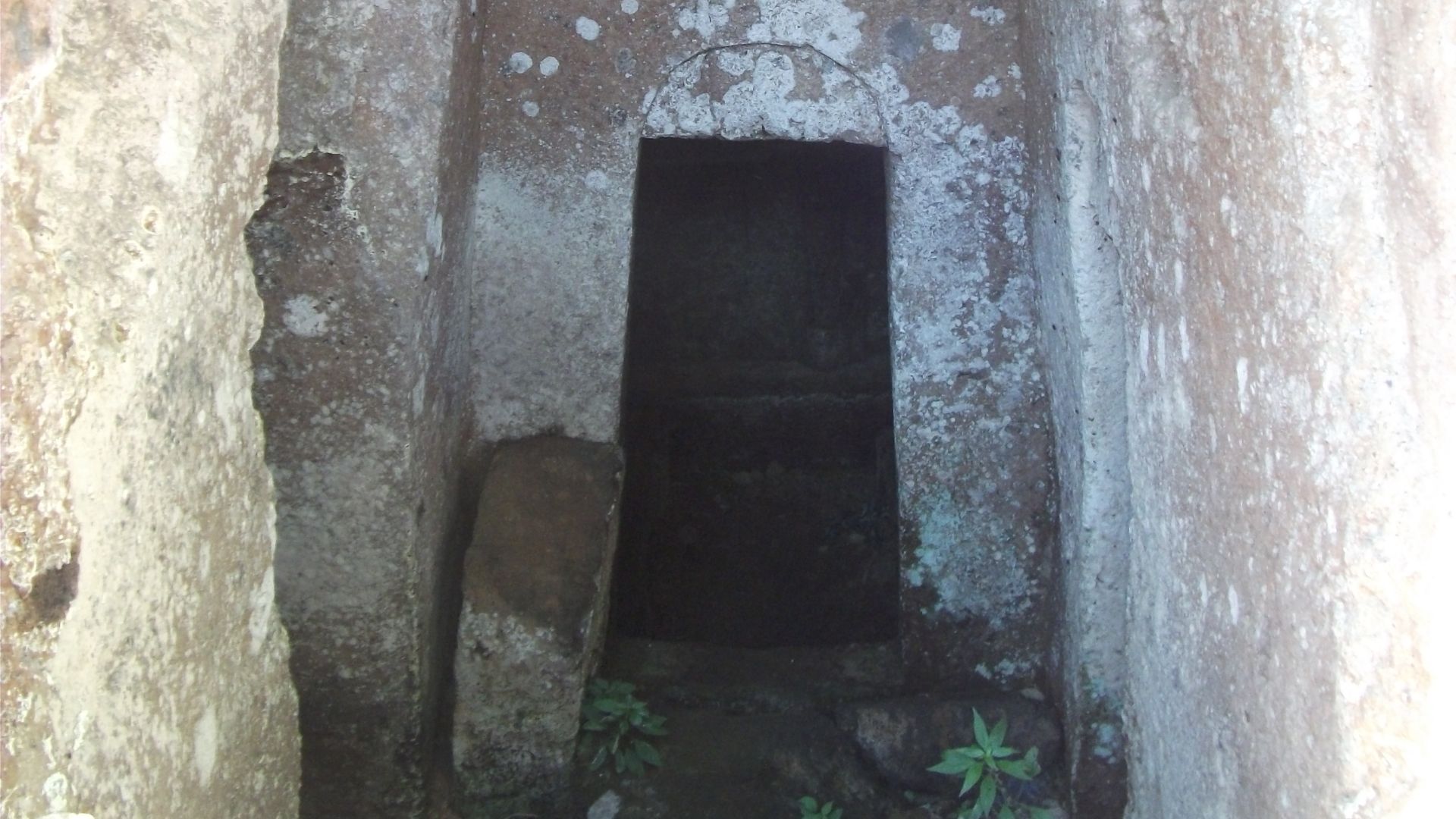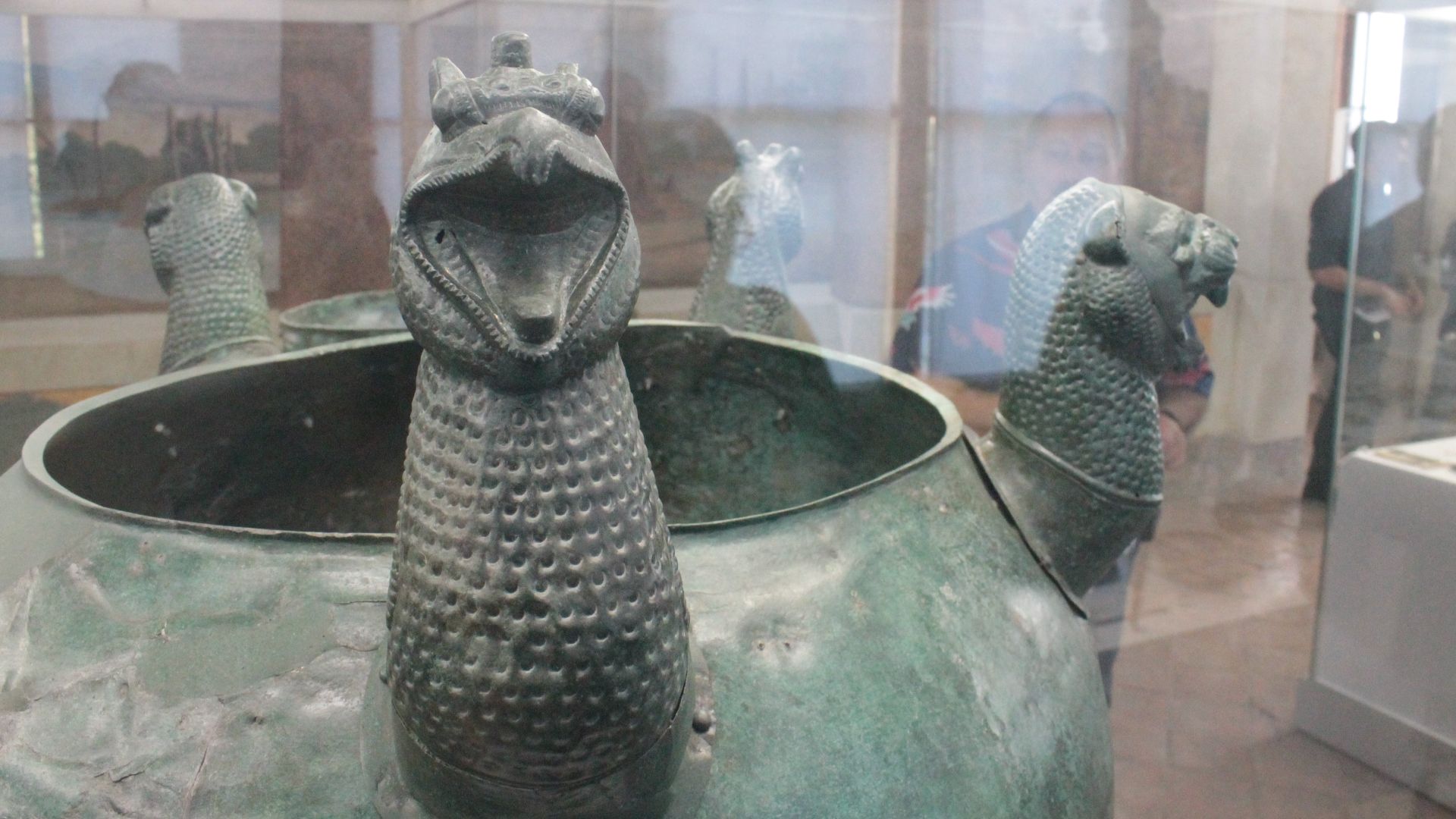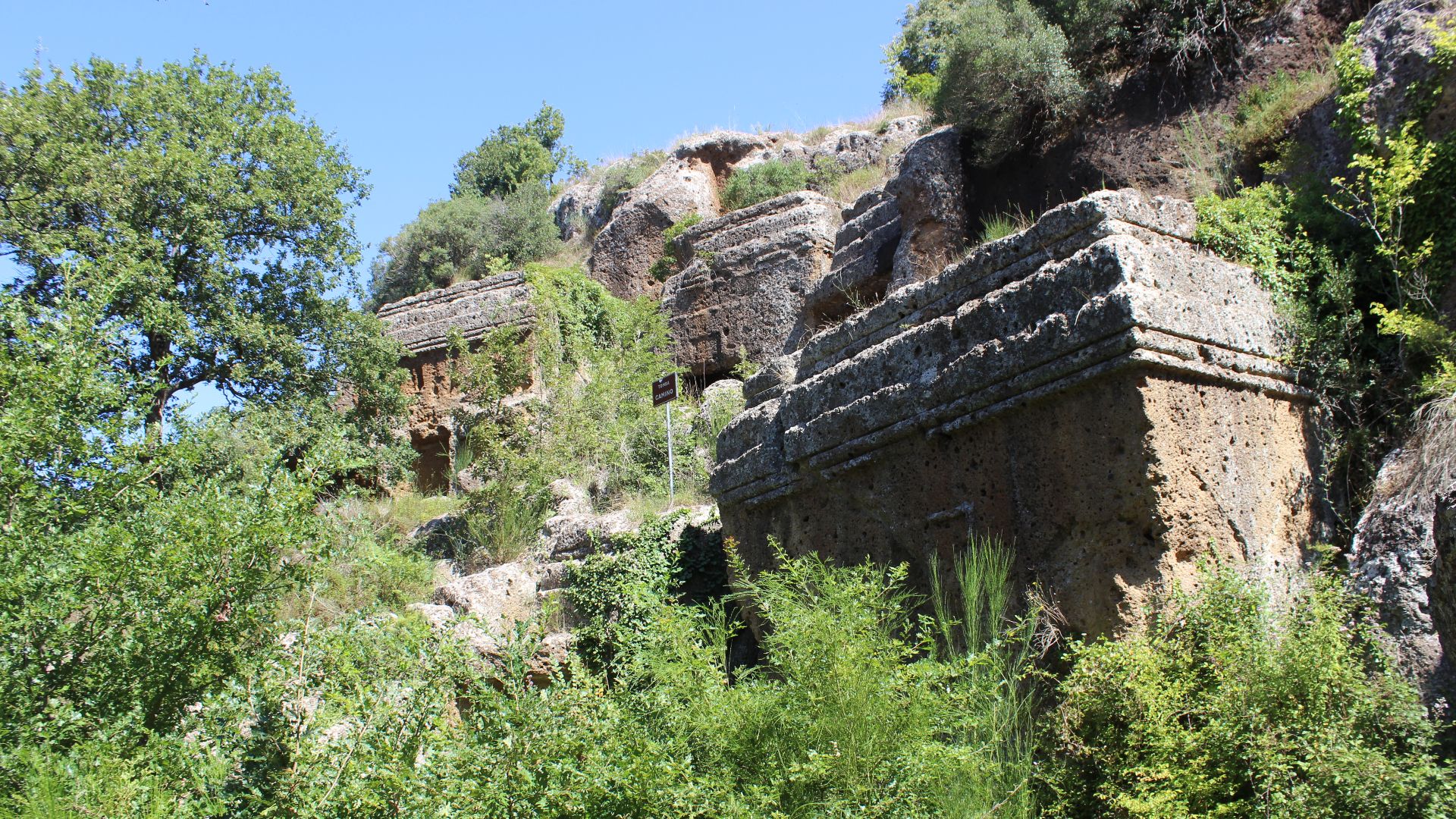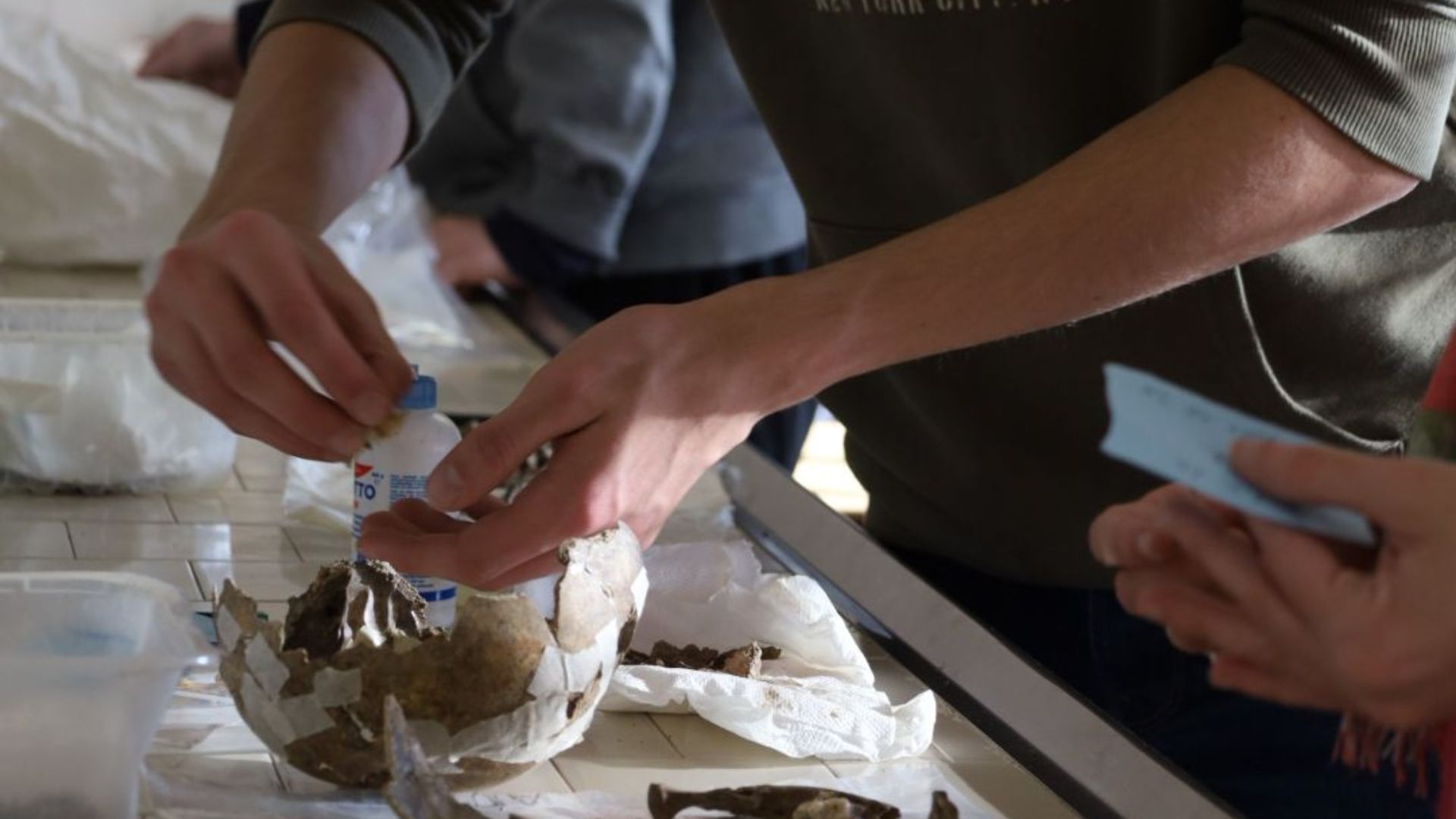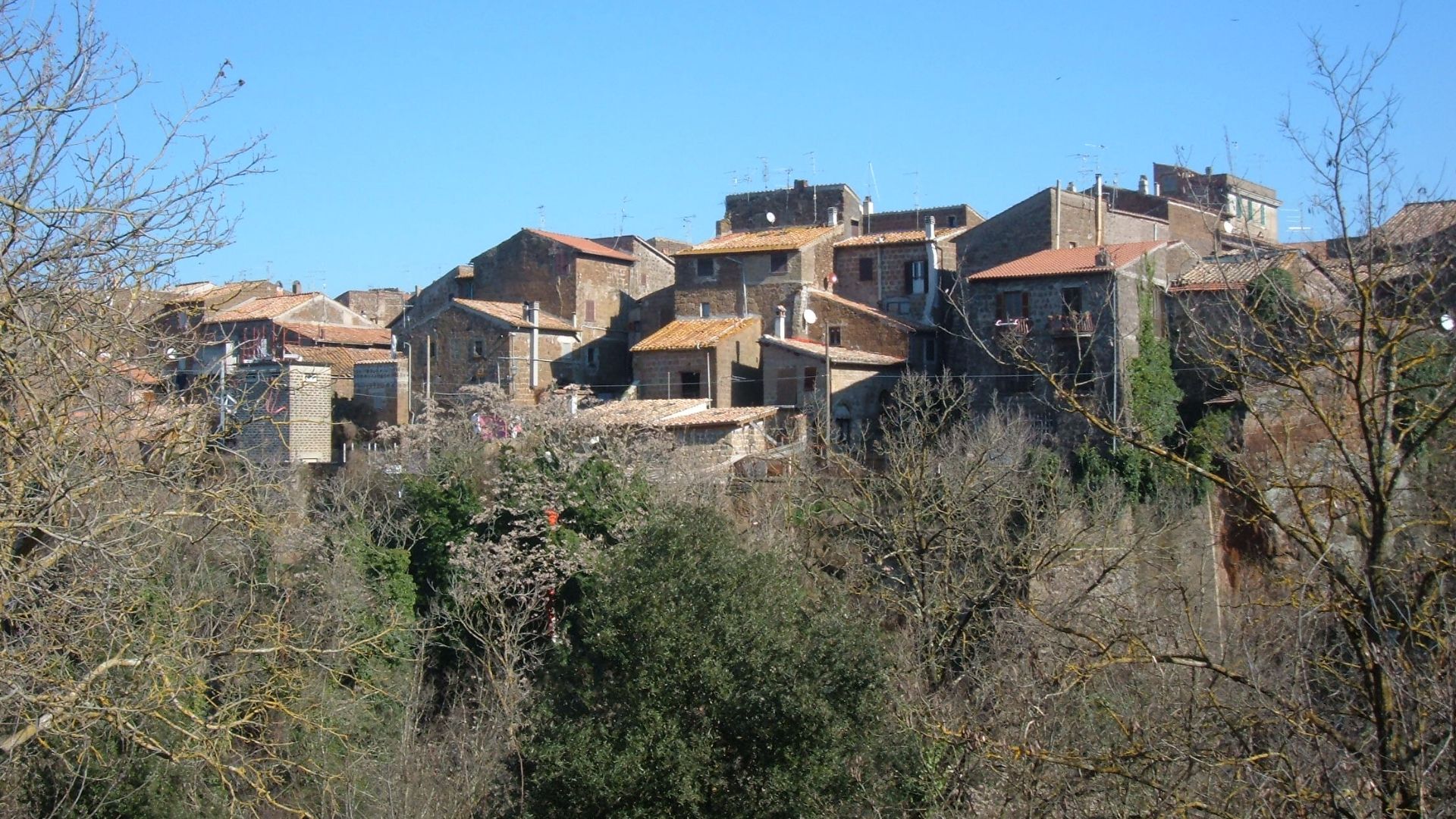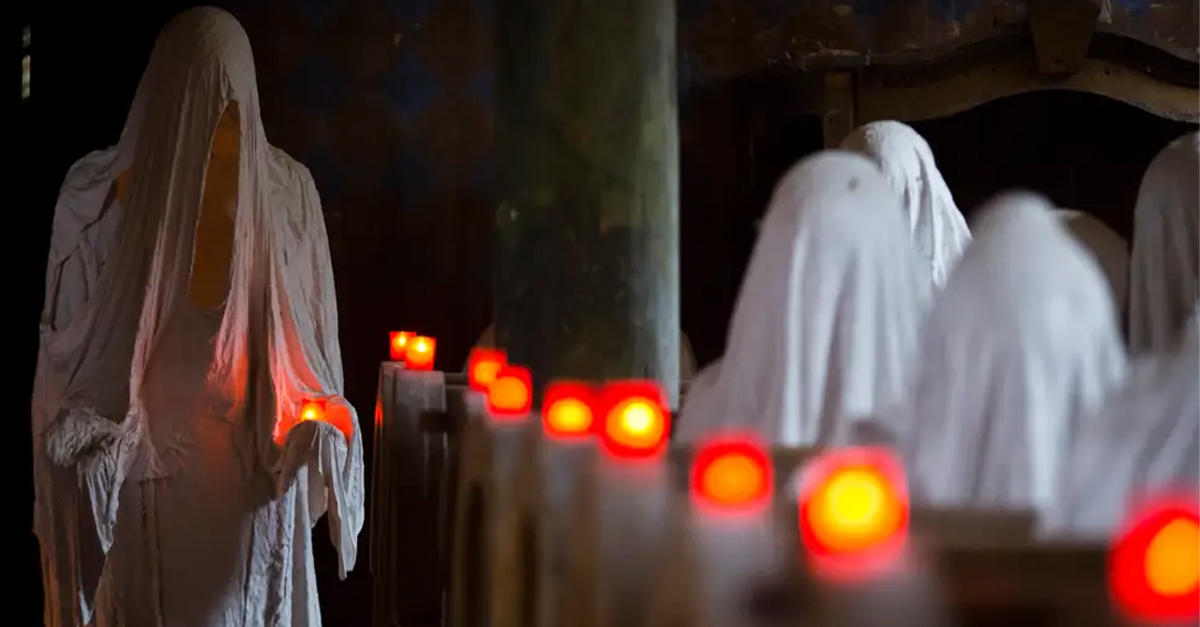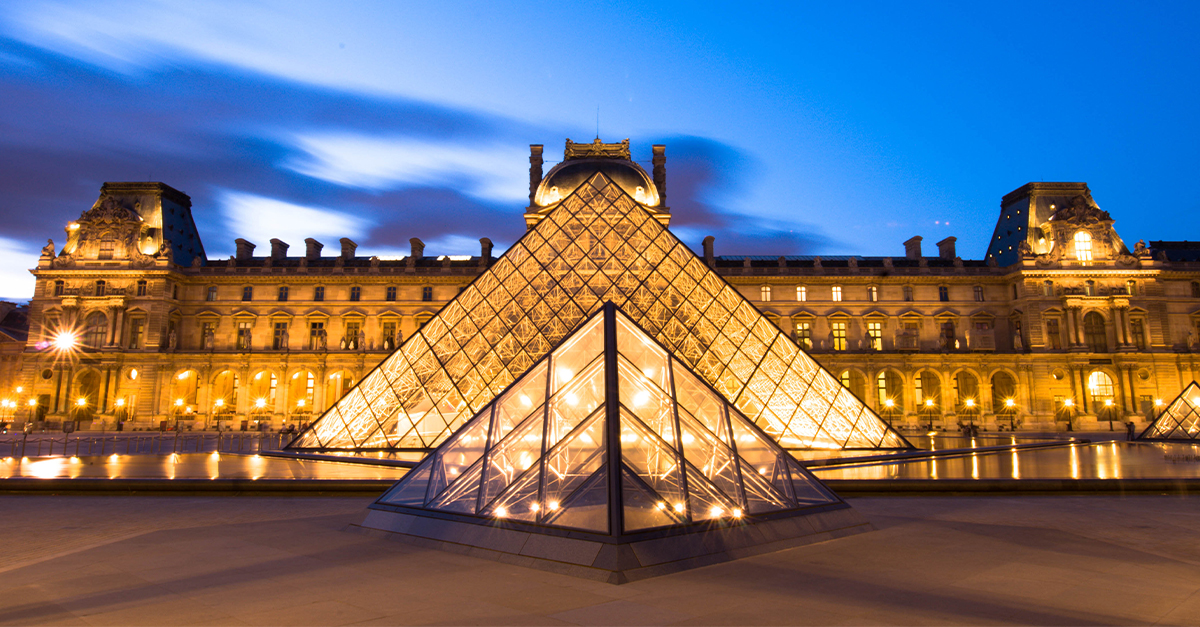Stories Beneath Stone
A forgotten civilization once thrived in central Italy, shaping rituals, cities, and beliefs long before Rome took center stage. Their legacy lies preserved in tombs that are complete with stories of everyday life and death.
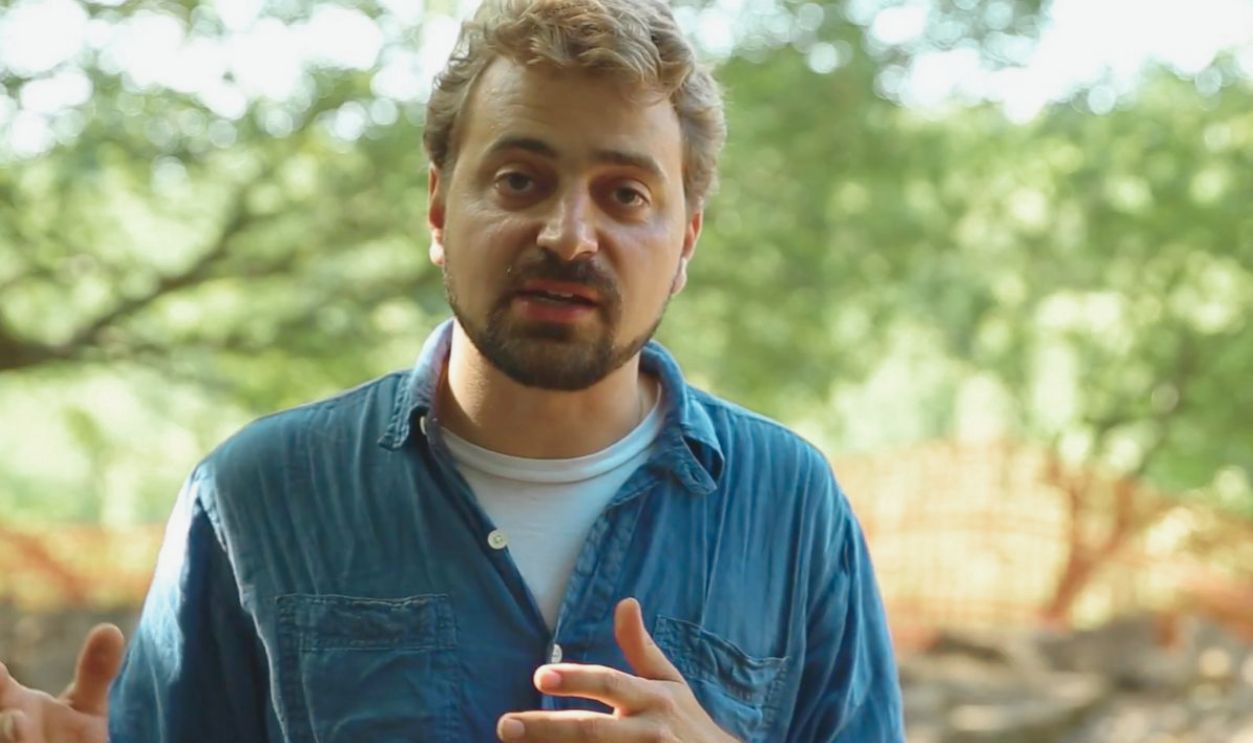
Etruscan Origins
The Etruscans developed the earliest urban civilization in the northern Mediterranean, flourishing for over nine centuries from the 8th to the 1st century BCE. This civilization thrived in central Italy before Rome's rise to power. It created advanced cities with unique languages and religious rituals.
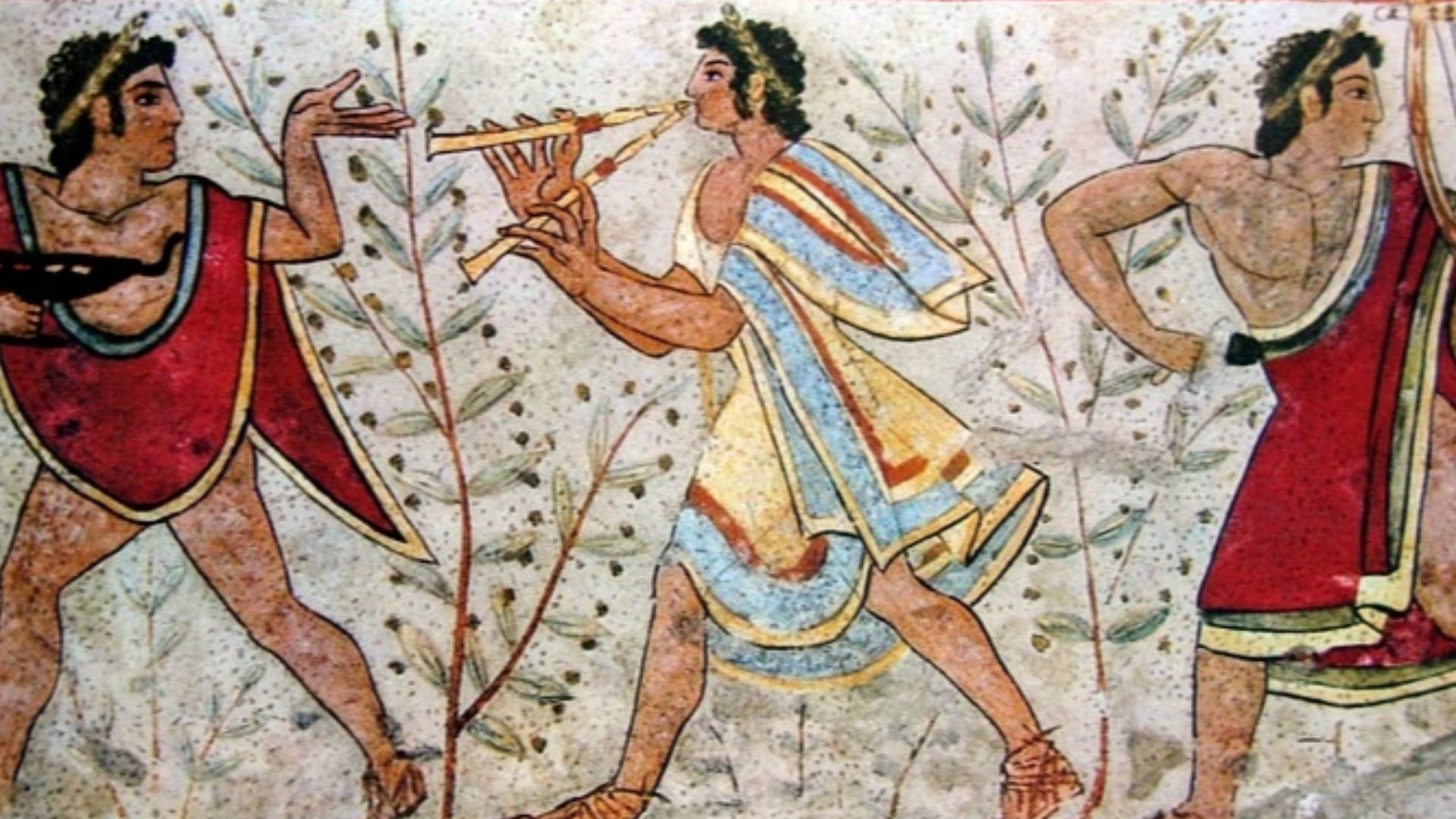 Unknown authorUnknown author, Wikimedia Commons
Unknown authorUnknown author, Wikimedia Commons
Villanovan Culture
According to sources, they emerged from the Villanovan culture (Iron Age, circa 900 BCE), which itself developed from the late Bronze Age Proto-Villanovan culture. This indigenous cultural development occurred in what is now Tuscany, western Umbria, and northern Lazio in Italy.
Civilization Rise
Central to Etruscan beliefs was haruspicy, a form of divination that involved examining animal entrails. It reflected their belief that divine forces influenced every aspect of human existence. Their pantheon included deities like Tinia (Jupiter), Uni (Juno), and Menrva (Minerva), worshipped in elaborate temples across Etruria.
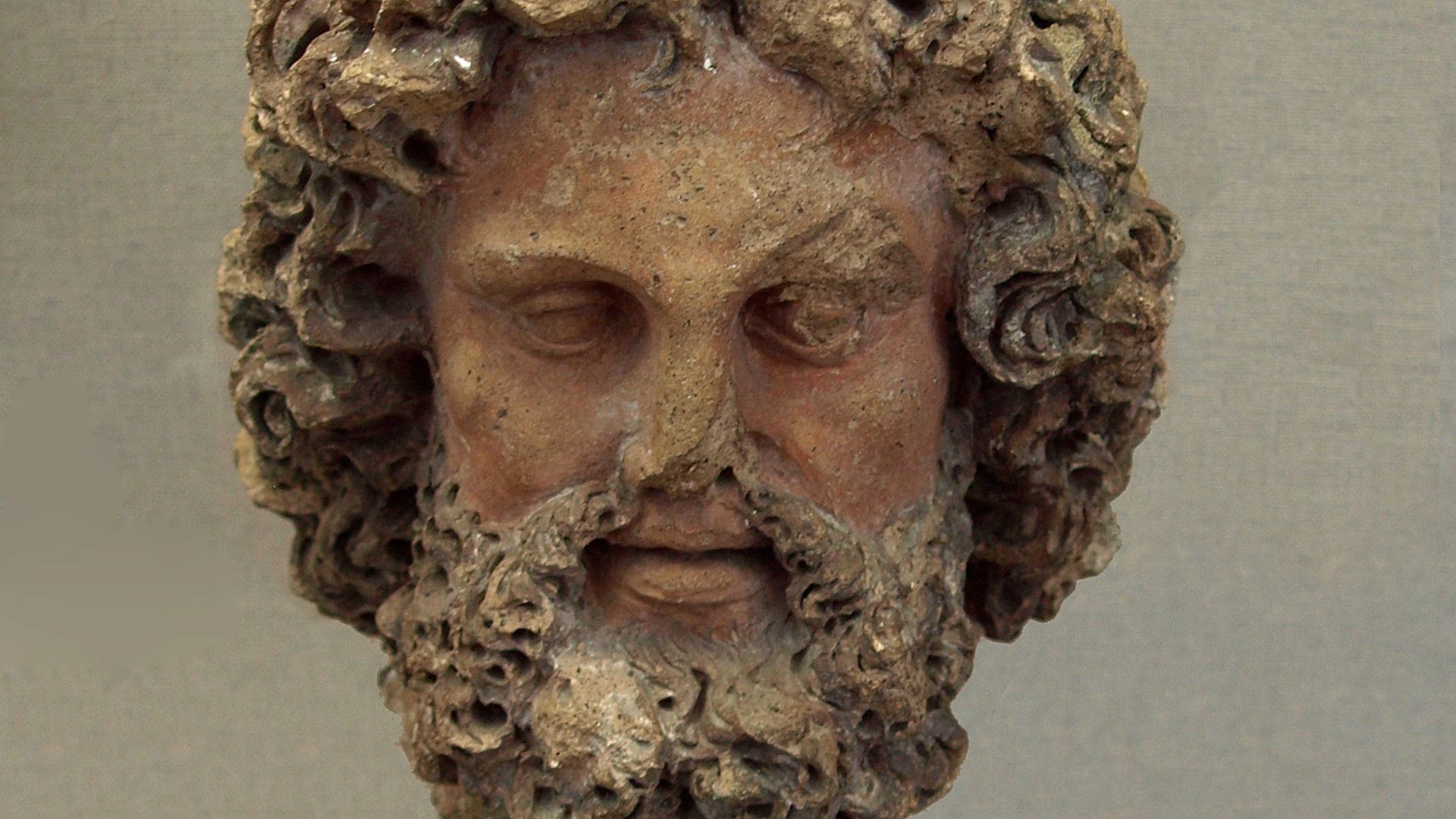 Dan Mihai Pitea, Wikimedia Commons
Dan Mihai Pitea, Wikimedia Commons
Burial Traditions
Etruscan attitudes toward death reveal profound spiritual beliefs through elaborate funerary practices. Both inhumation and cremation were popular throughout the Etruscan period, with cremation initially most common before inhumation became fashionable during the Orientalising period. Cremated remains were placed in metal or pottery urns.
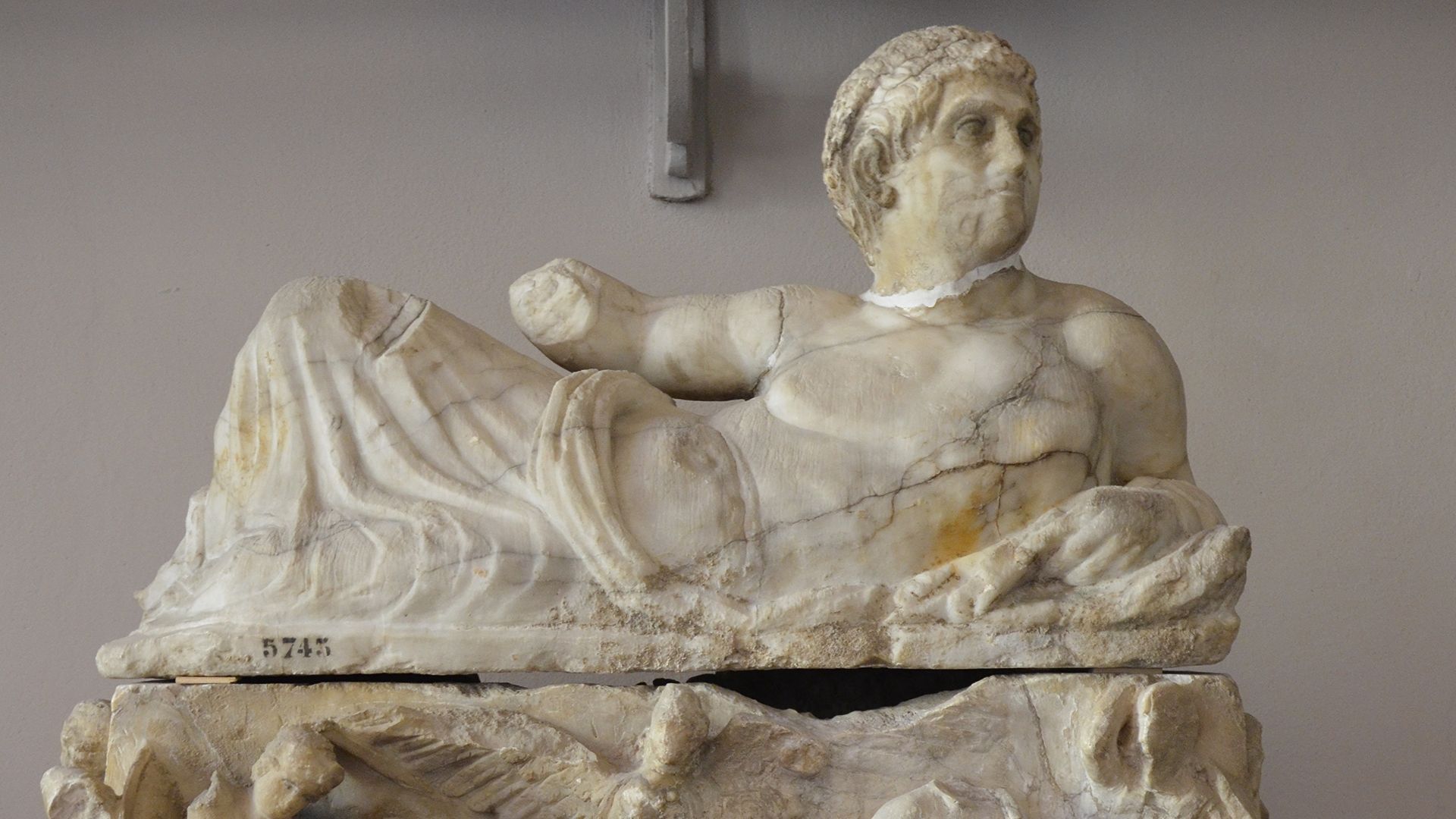 Carole Raddato from FRANKFURT, Germany, Wikimedia Commons
Carole Raddato from FRANKFURT, Germany, Wikimedia Commons
Necropolis Development
The necropolis near Cerveteri, known as Banditaccia, has a lot of tombs organized in a city-like plan, with streets, small squares, and neighbourhoods. These "cities of the dead" weren't random burial grounds but carefully planned communities for the deceased. Their tombs were built underground, carved from natural bedrock.
Roman Conquest
By the first century BC, Etruria was absorbed into the Roman state, which reshaped local institutions and daily life. The transition wasn't immediate—Roman influence gradually integrated Etruscan territories over several centuries. Looting of Etruscan tombs began as early as the Roman occupation in the late third century BC.
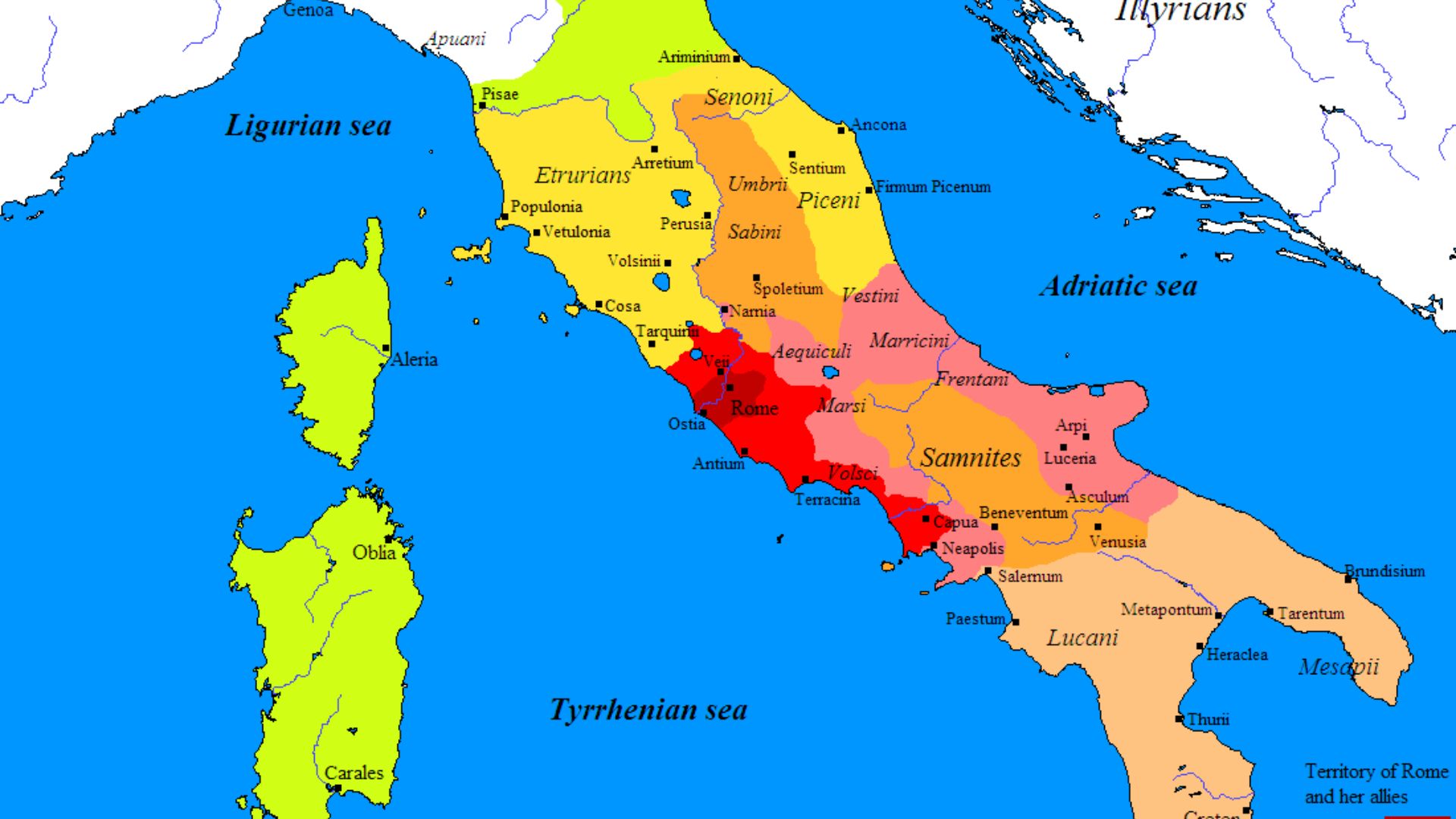 Javierfv1212, Wikimedia Commons
Javierfv1212, Wikimedia Commons
Looting History
For two millennia, treasure hunters systematically emptied burial chambers throughout central Italy. The research project has been active in the region since 2016, uncovering over 600 tombs in the necropolis, though every other chamber tomb had been previously looted.
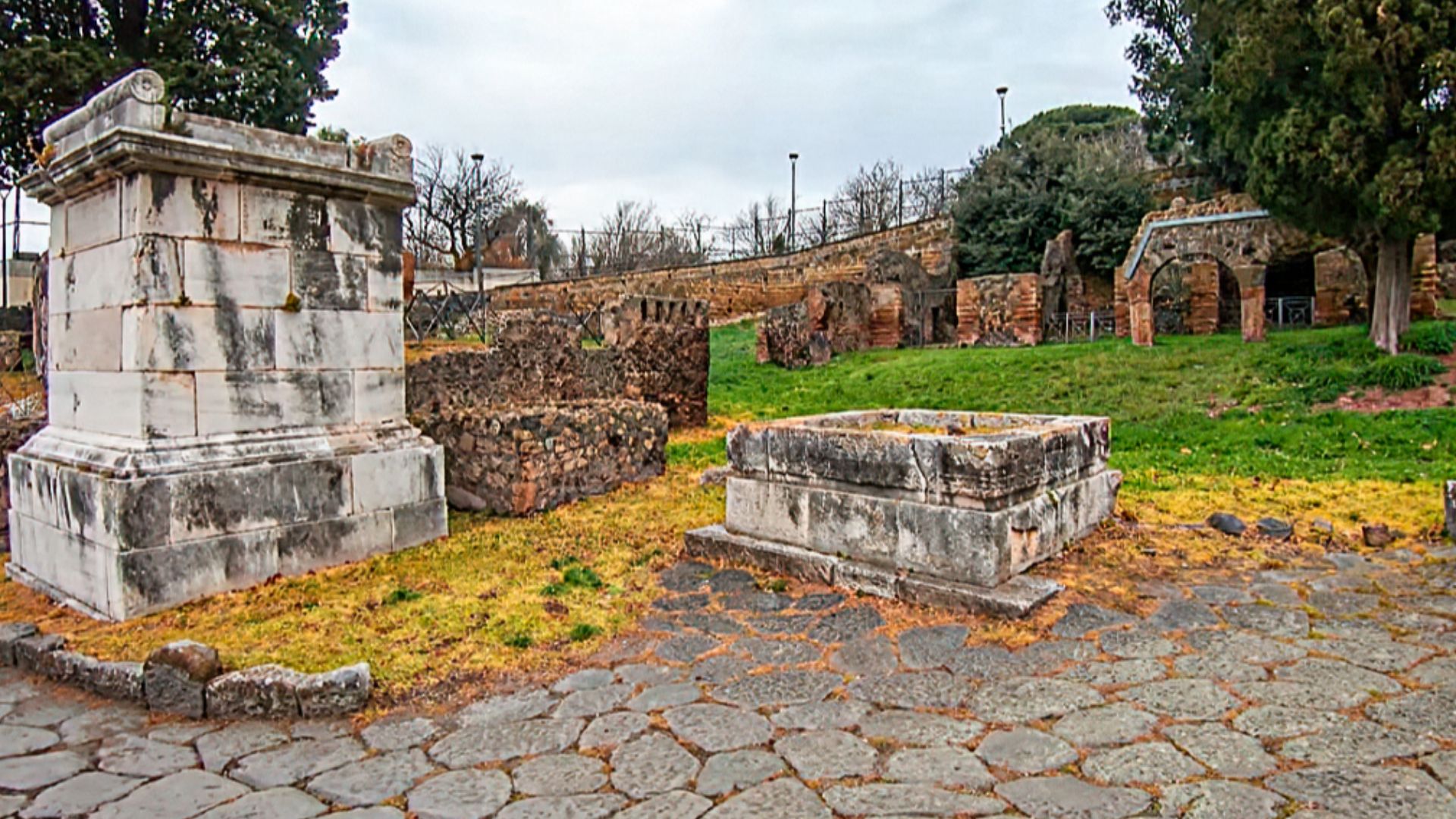 Isaac Harjo of Prowalk Tours, Wikimedia Commons
Isaac Harjo of Prowalk Tours, Wikimedia Commons
Site Rediscovery
Modern archaeological interest in San Giuliano began as part of broader 19th and 20th-century explorations of Etruscan sites. SGARP's goal is to reconstruct long-term changes in human occupation of the San Giuliano plateau, investigating Etruscan occupation and understanding transitions, including incorporation into the Roman Empire.
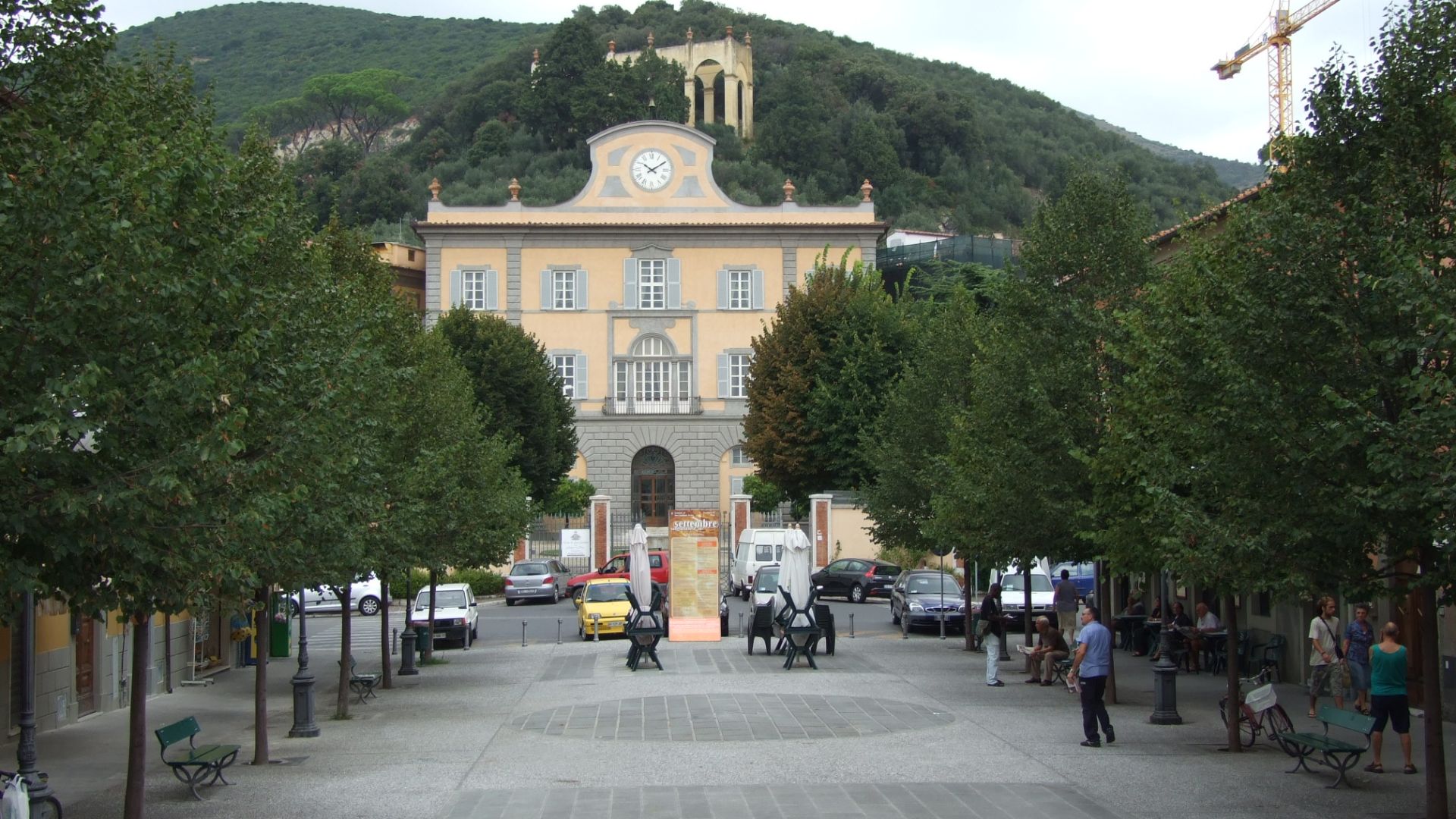 Roberto Narducci, Wikimedia Commons
Roberto Narducci, Wikimedia Commons
Research Project
The San Giuliano Archaeological Research Project (SGARP) is a Baylor University-led consortium that collaborates with Virgil Academy in Rome, working in partnership with Barbarano Romano under the auspices of Italy's Ministry of Culture. Since 2016, this transdisciplinary project has targeted San Giuliano's archaeological past.
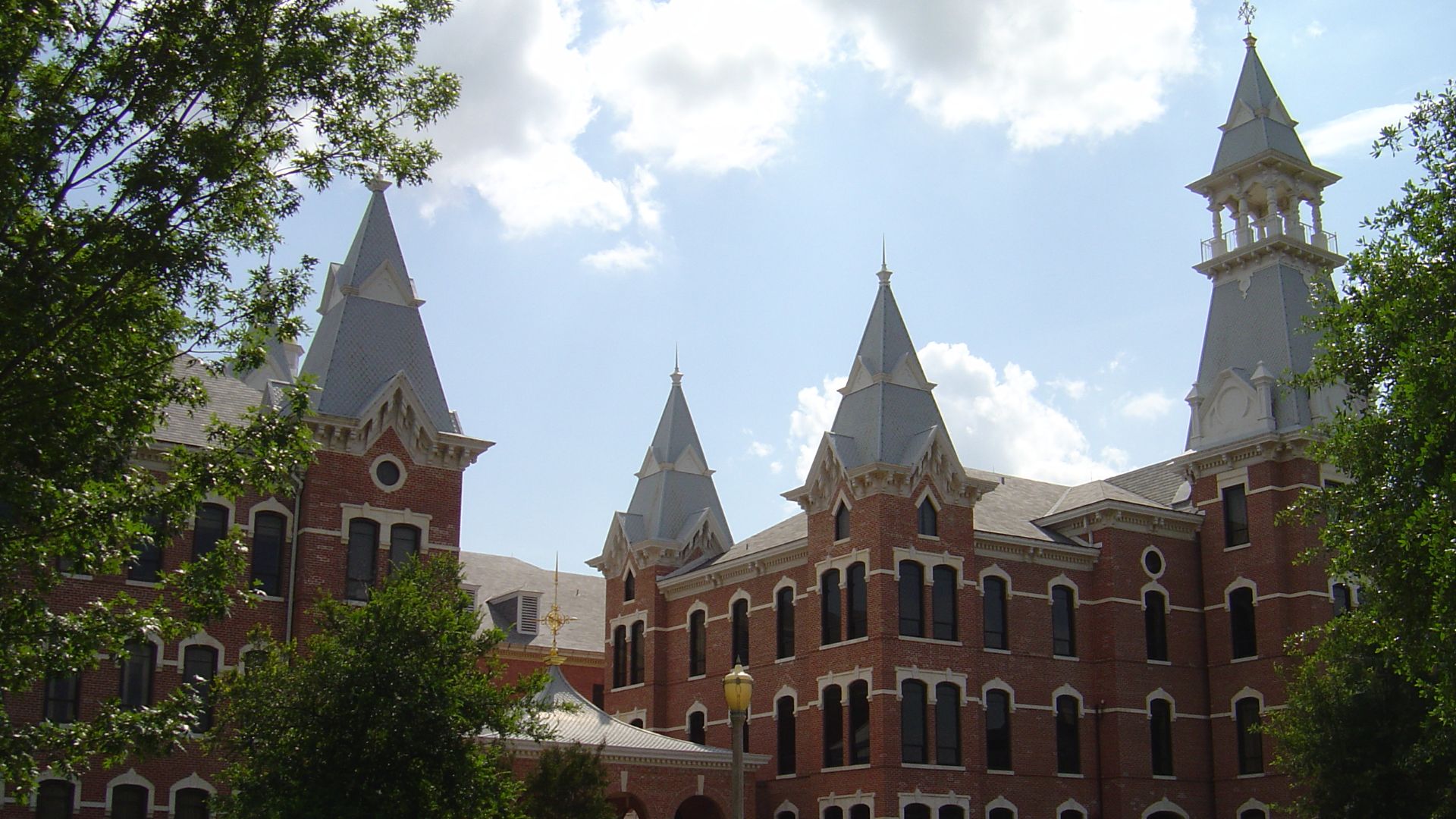 W>Aboxorocks, Wikimedia Commons
W>Aboxorocks, Wikimedia Commons
Team Formation
The discovery was made by archaeologists led by Davide Zori, PhD, principal investigator for SGARP and associate professor of history and archaeology in the Baylor Interdisciplinary Core at Baylor University. Co-principal investigator Jamie Aprile and laboratory director Jerolyn Morrison supervised excavation areas.
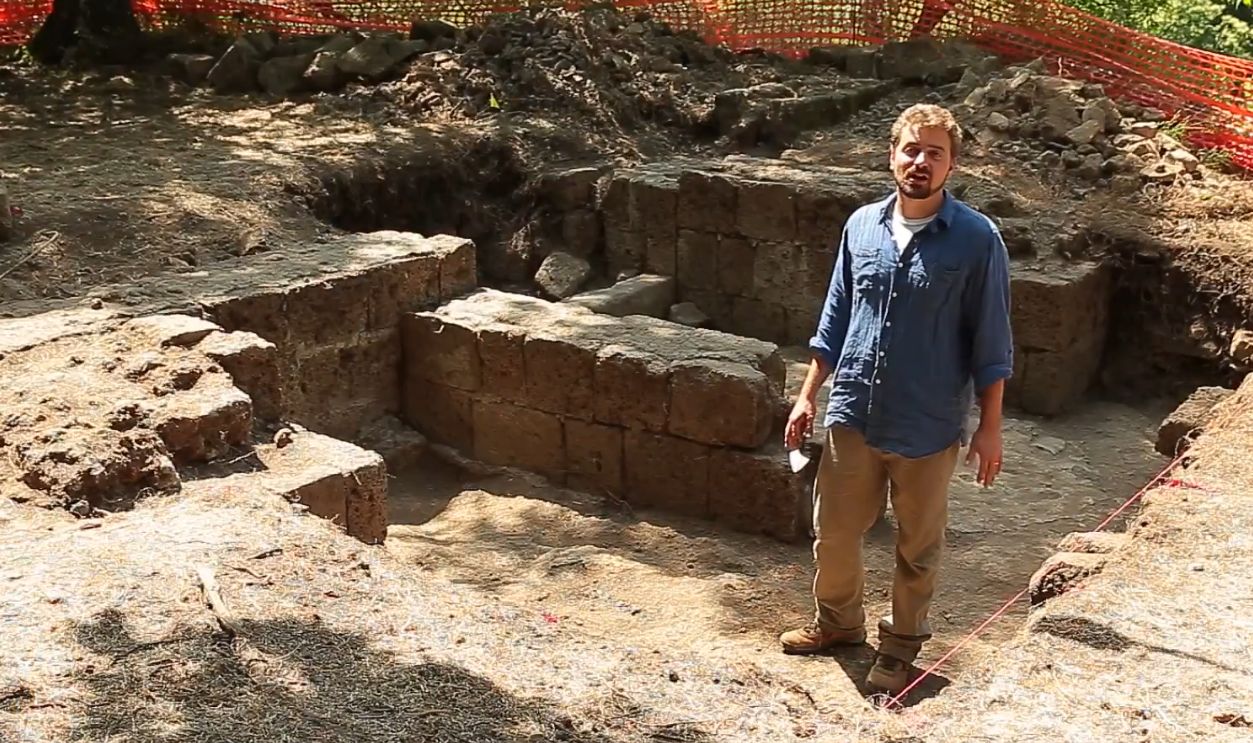 Davide and Colleen Zori. San Giuliano Medioeval Site description. by Virgil Academy
Davide and Colleen Zori. San Giuliano Medioeval Site description. by Virgil Academy
Excavation Planning
The team employed modern archaeological methods to document every layer and object before any movement, thereby preserving the context that is usually lost. In the internal hilly region of Italy, a preserved chamber tomb of this age has never before been excavated with such archaeological techniques.
Initial Discovery
The breakthrough moment came when excavators encountered a stone entranceway built into a massive mound during routine site documentation. The underground pit-like entry had a door sealed with a rock slab, and once carefully removed, it showed a rectangular opening. They peered through the doorway to find tomb materials intact.
Tomb Opening
Davide Zori was prepared to remove the stone slab that had been protecting the tomb's entrance for more than 2600 years. The painstaking process required extreme care to avoid damaging the seal or disturbing the chamber's contents. Local community members from Barbarano Romano gathered to witness the unprecedented event.
 Henri Labrouste, Wikimedia Commons
Henri Labrouste, Wikimedia Commons
Chamber Revealed
The tomb, carved from stone in the shape of a small house, contains the remains of four individuals, each lying on a stone bed. Upon entering the preserved burial chamber, researchers uncovered an extraordinary snapshot of 7th-century BCE Etruscan life frozen in time.
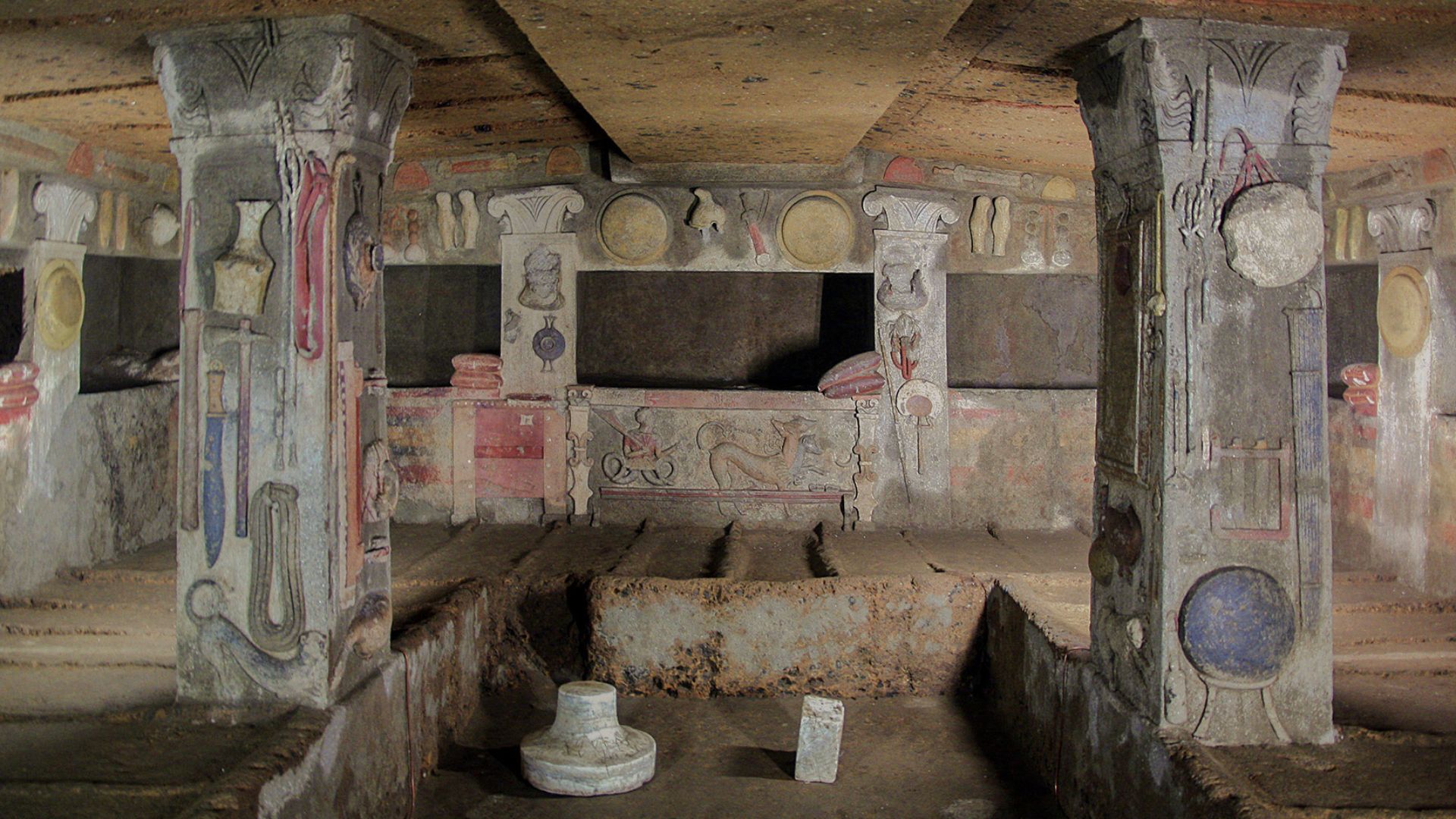 Roberto Ferrari from Campogalliano (Modena), Italy, Wikimedia Commons
Roberto Ferrari from Campogalliano (Modena), Italy, Wikimedia Commons
Funerary Furniture
Funerary furniture was arranged with ritual care, including dozens of beautifully painted Etruscan-Geometric style ceramic vessels, a basin, and bronze ornaments placed on burial beds. The chamber's house-like design mirrored Etruscan beliefs about providing familiar domestic spaces for the afterlife journey.
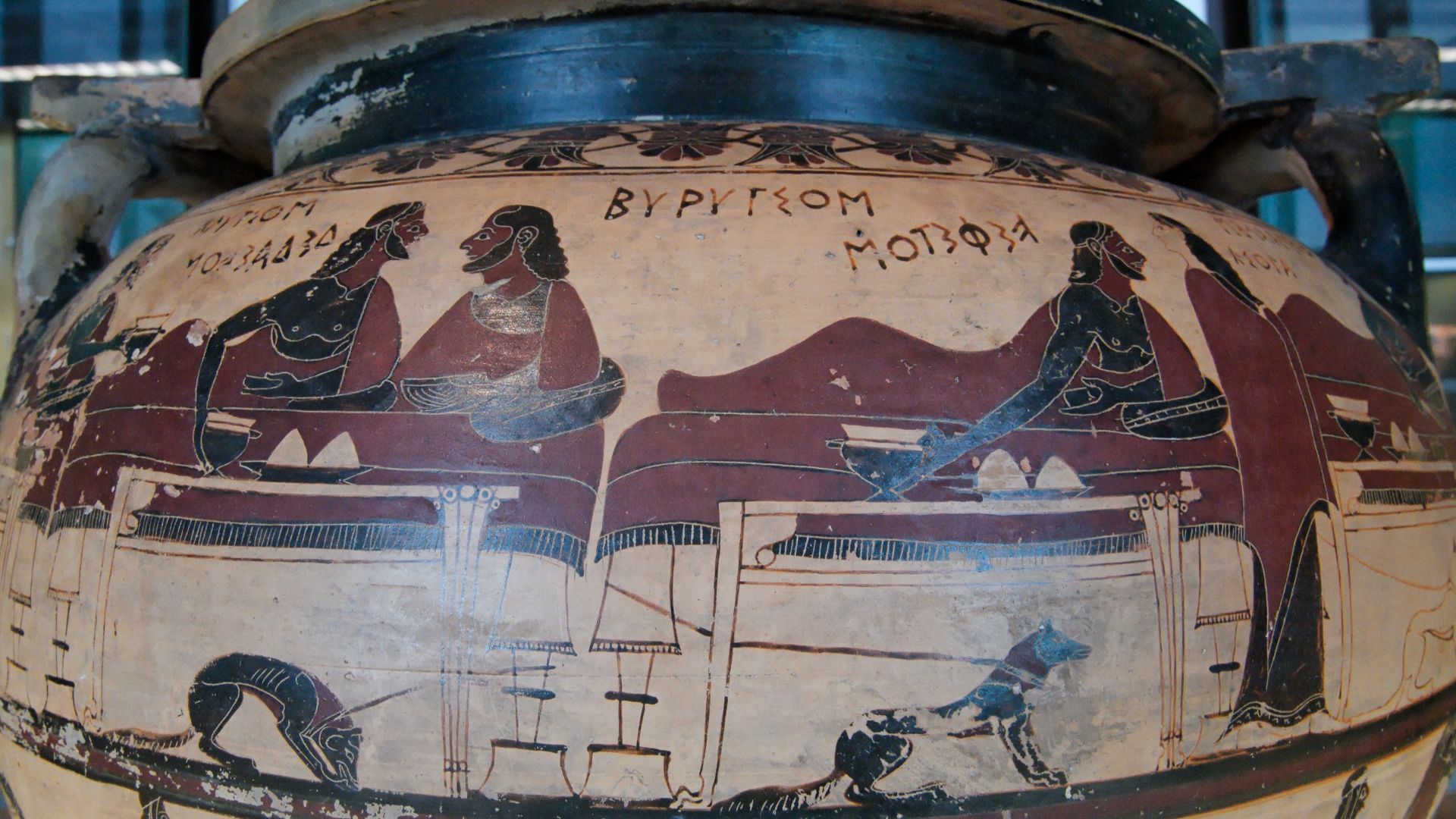 User:Jastrow, Wikimedia Commons
User:Jastrow, Wikimedia Commons
Burial Layout
Preliminary analysis suggested that the four individuals might be two male-female pairs, though further anthropological, isotopic, and genetic studies await completion. Each person occupied a distinct position within the chamber's carefully planned arrangement. The stone beds were carved directly from the volcanic bedrock with attention to detail.
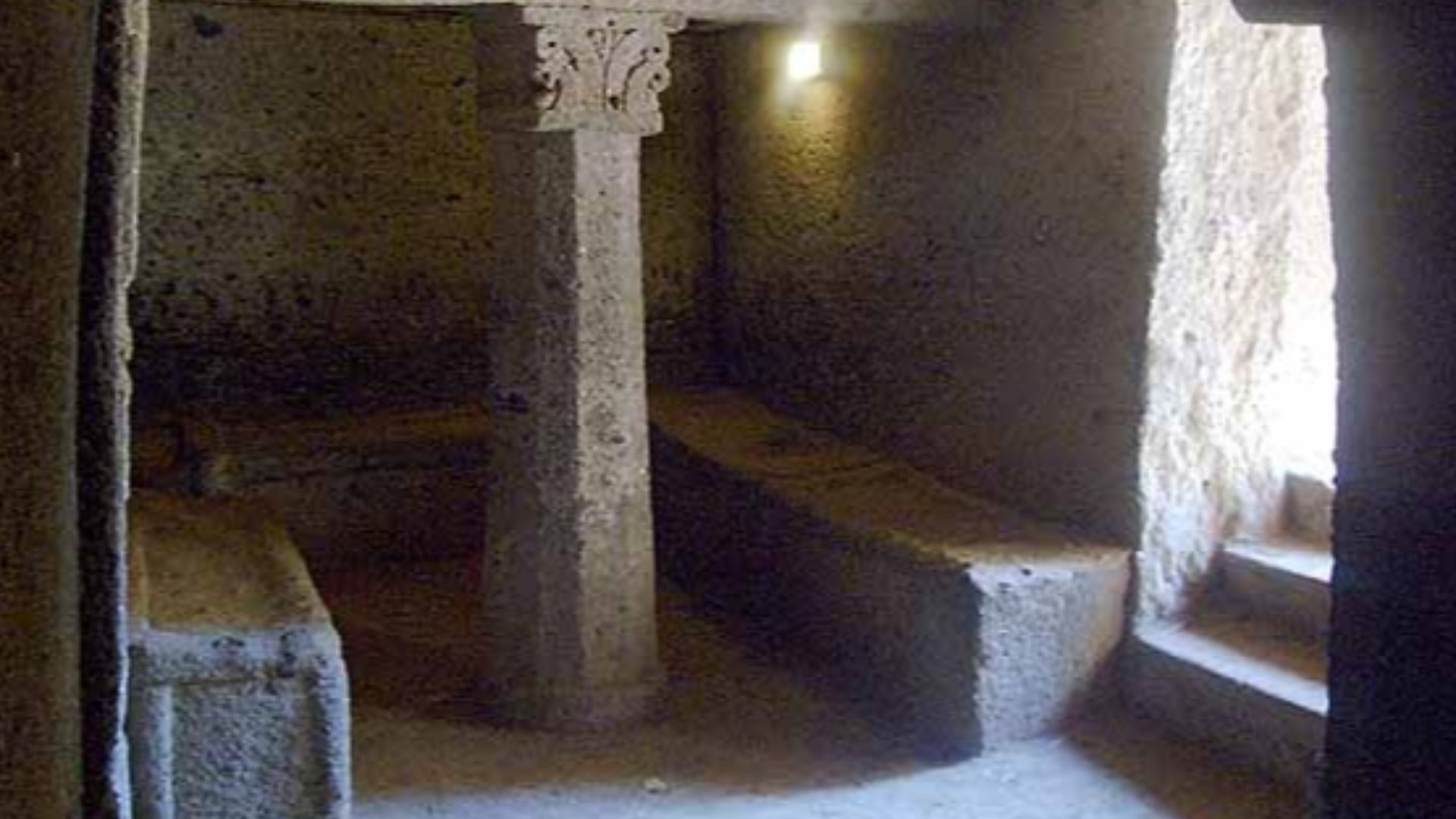 it:User:Lucius, Wikimedia Commons
it:User:Lucius, Wikimedia Commons
Artifact Inventory
The deceased were surrounded by more than 110 artifacts, including ceramic vases, iron weapons, bronze ornaments, and delicate silver hair spools. A total of 74 nearly completely intact pots were found inside the tomb, each requiring individual documentation and preservation protocols.
Ceramic Vessels
These vessels served both practical and ritual purposes—some designed for food and drink storage, others specifically created for funerary ceremonies. Analysis of clay compositions and decorative motifs will help researchers map trade networks and artistic influences across the Mediterranean region during this pivotal historical period.
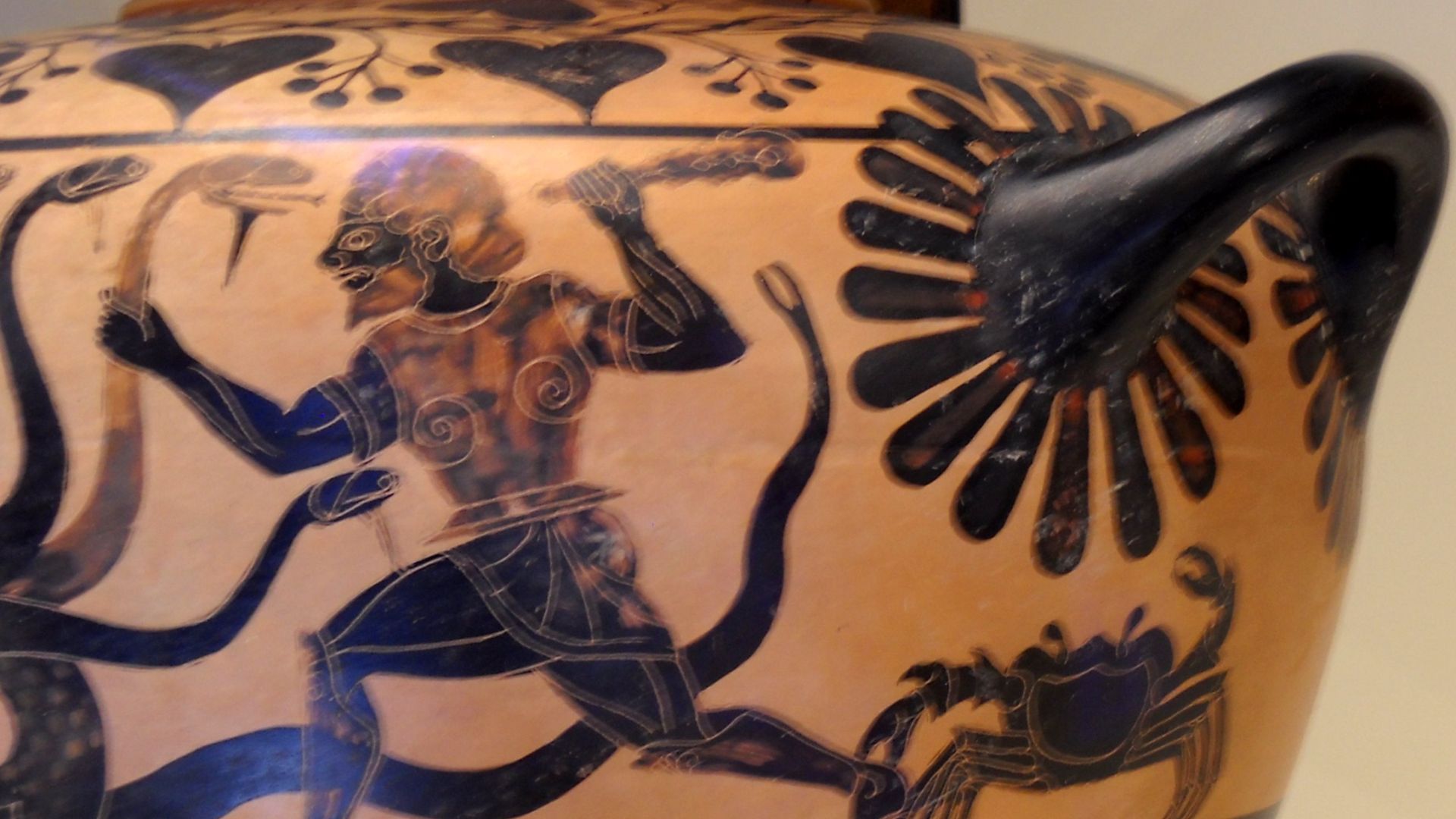 Dave & Margie Hill / Kleerup from Centennial, CO, USA, Wikimedia Commons
Dave & Margie Hill / Kleerup from Centennial, CO, USA, Wikimedia Commons
Bronze Ornaments
Bronze ornaments detected throughout the chamber represent some of the finest examples of metalworking from 7th-century BCE central Italy. The bronze fibulae (brooches) are particularly significant because some of them still have traces of textile fibers attached. Fibulae were functional items used to fasten garments.
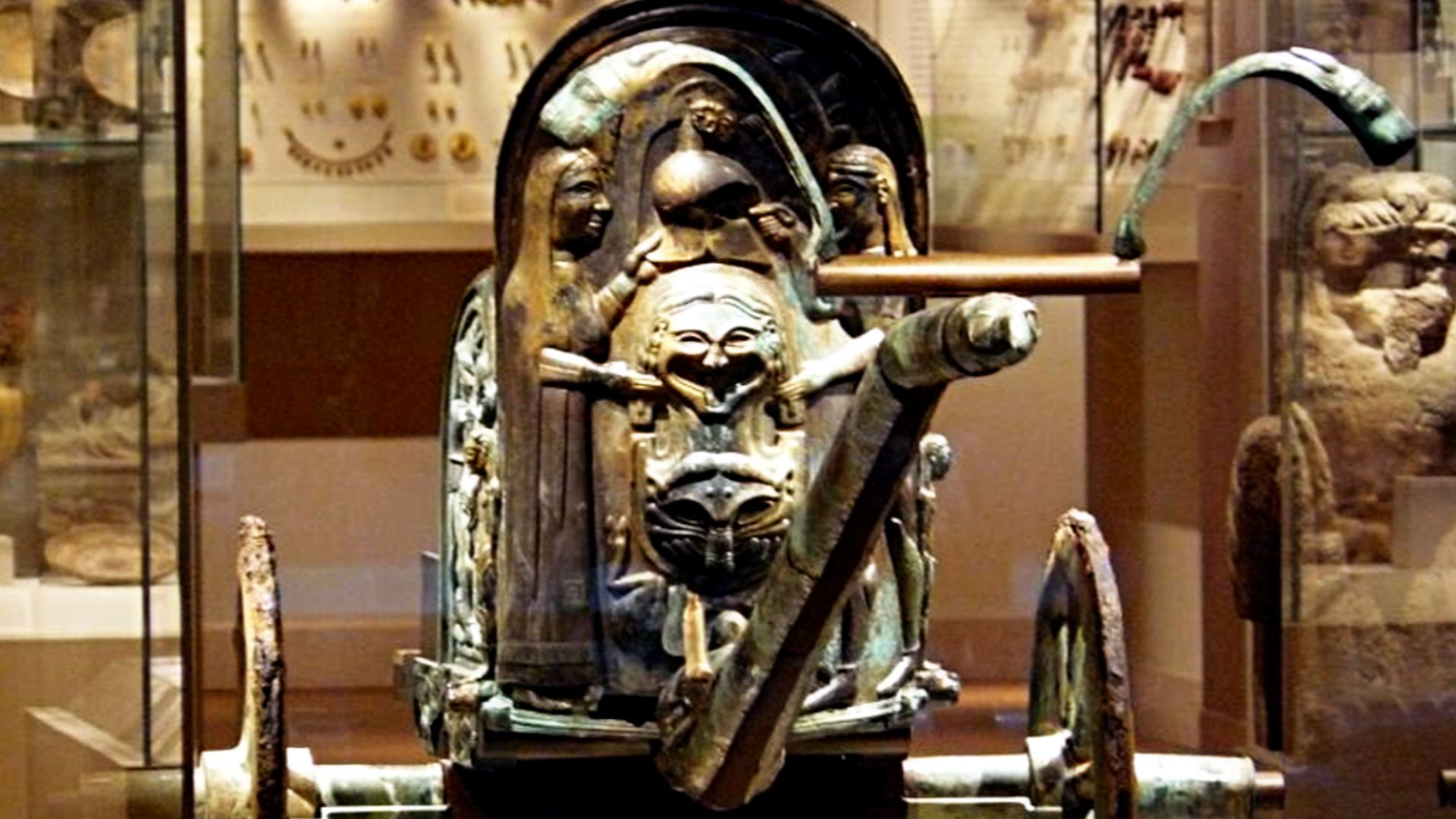 Unknown authorUnknown author, Wikimedia Commons
Unknown authorUnknown author, Wikimedia Commons
Silver Spools
Hair spools made of delicate silver are luxury objects that showcase the personal grooming habits of affluent Etruscan ladies. The positioning of the spools inside the tomb alludes to the high social standing of their owners as well as the significance of preserving one's status in the afterlife.
Iron Weapons
The finding of iron weapons alongside personal items suggests the military importance and warrior status of at least some of the buried individuals. These items most likely included spears, daggers, or blades to symbolize the martial status or role of the deceased.
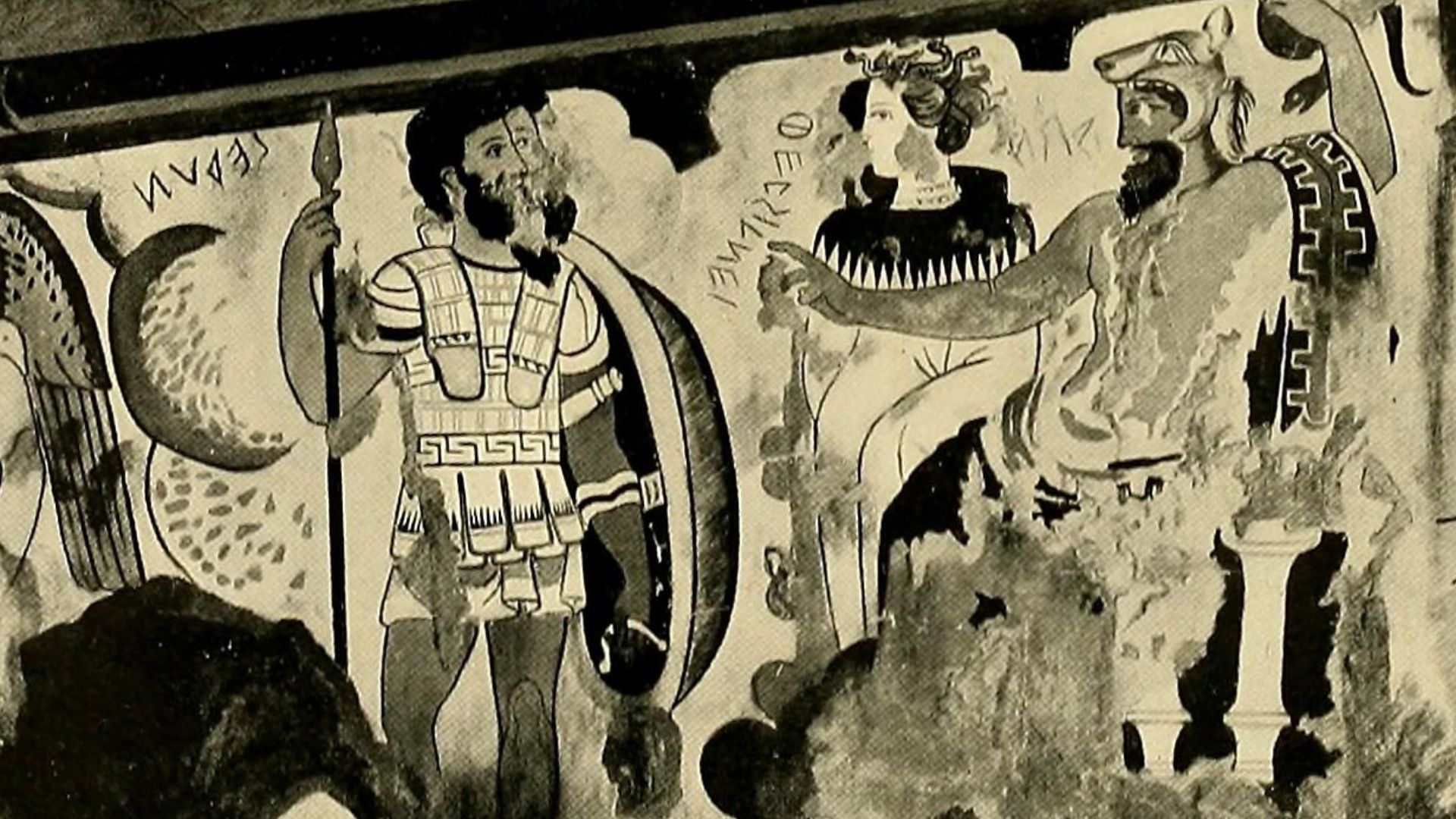 Internet Archive Book Images, Wikimedia Commons
Internet Archive Book Images, Wikimedia Commons
Scientific Methods
Bioarchaeologists will investigate whether the four individuals were related by family, using genetic and dental evidence to identify kinship and migration patterns. Additionally, advanced isotopic analysis of teeth and bones will investigate diet and mobility throughout lifetimes, revealing whether these individuals were residents or migrants.
Student Participation
Since 2016, Baylor students have participated directly in every aspect of the excavation process through the "Archaeology Research in Italy" study abroad program. Undergraduate students gained hands-on experience with stratigraphic excavation, artifact documentation, and preservation protocols while working within the framework of Italian heritage law.
Cultural Impact
Local community engagement includes regular lab visits where Barbarano Romano residents viewed artifacts as they were cataloged, building trust and protecting sites by making science visible. Museum exhibitions will eventually display these artifacts, connecting modern audiences with ancient Etruscan heritage and identity.

